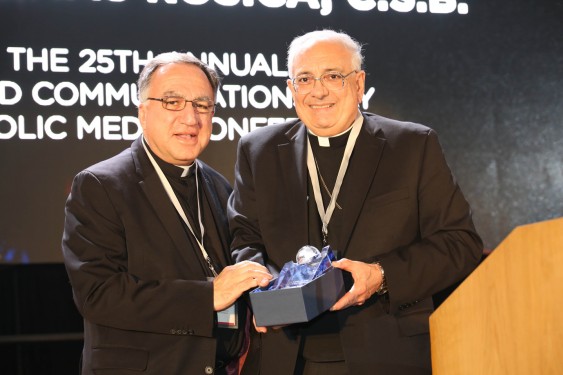
Pope Francis has rebranded the Church and the papacy, and the media have taken notice.
That was the message delivered by Father Thomas Rosica, C.S.B., who gave the keynote address at the 25th annual diocesan observance of World Communications Day sponsored by the DeSales Media Group.
About 250 people were in attendance at the event that was held May 12 at the Marriott by the Brooklyn Bridge in Downtown Brooklyn.
Father Rosica, the CEO of Salt + Light Catholic Media Foundation and the English attaché to the Holy See Press Office at the Vatican, was presented with the diocese’s St. Francis DeSales Distinguished Communicator Award by Bishop Nicholas DiMarzio.
“Prior to Pope Francis, when many people on the street were asked: ‘What is the Catholic Church all about? What does the pope stand for?’, the response would often be, ‘Catholics, well they are against abortion, gay marriage and birth control.’ ‘They are known for the sex abuse crisis that has terribly marred and weakened their moral authority and credibility,’” said Father Rosica.
“Today I dare say that the response is somewhat different. What do they say about us now? What do they say about the Pope? People are speaking about our leader who is unafraid to confront the sins and evils that have marred us.
“We have a Pope who is concerned about the environment, about mercy, compassion and love, and a deep passion, care and concern for the poor and for displaced peoples roaming the face of this earth. Pope Francis has won over a great part of the media.
“He has changed the image of the Church so much that prestigious graduate schools of business and management are now using him as a case study in rebranding.”
While the pope has caused more people to take notice, that doesn’t mean that everyone agrees or follows the message he preaches, Father Rosica said.
But he explained that the pope has opened up a dialogue with the world and the Catholic media is a big part of showcasing the work of the Church.
He referred to Pope Francis’ message for World Communications Day to explain how church media should go about its work.
“Our primary task is to uphold the truth with love,” he said.
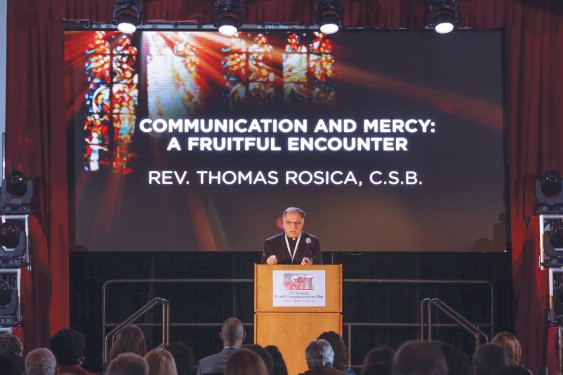
That means that Catholic media should “listen” to, rather than merely “hear,” as it engages in dialogue.
It also means that church media should communicate with everyone, without exception.
It further means that “Christians ought to be a constant encouragement to communion and, even in those cases where they must firmly condemn evil, they should never try to rupture relationships and communication.”
Father Rosica further added that “political and diplomatic language would do well to be inspired by mercy, which never loses hope.”
“May our way of communicating help to overcome the mind-set that neatly separates sinners from the righteous,” he said. “We can and we must judge situations of sin – such as violence, corruption and exploitation – but we may not judge individuals, since only God can see into the depths of their hearts.”
Father Rosica said the work of the Catholic media is to build bridges that encourage encounter and inclusion and to avoid misunderstandings that add to wounds and vengeance.
He urged a prudent use of some of the new social media.
“The character assassination on the Internet by those claiming to be Catholic and Christian has turned it into a graveyard of corpses strewn all around,” he said.
“Often times the obsessed, scrupulous, self-appointed, nostalgia-hankering virtual guardians of faith or of liturgical practices are very disturbed, broken and angry individuals, who never found a platform or pulpit in real life and so resort to the Internet and become trolling pontiffs and holy executioners! In reality they are deeply troubled, sad and angry people.”
He pointed out that Catholic media will be held to accountability and responsibility for creating communion and engaging in a dialogue that is fueled by mercy and understanding.
“The Church must shine with the light that lives within itself, it must go out and encounter human beings who – even though they believe that they do not need to hear a message of salvation – often find themselves afraid and wounded by life,” he said.
“The light of Christ reflected in the Church must not become the privilege of only a few elect who float enclosed within a safe harbor or ghetto network of communications for the elite, the clean, the perfect and the saved.”
Topics for Workshops
After Father Rosica’s keynote address, several breakout sessions were held.
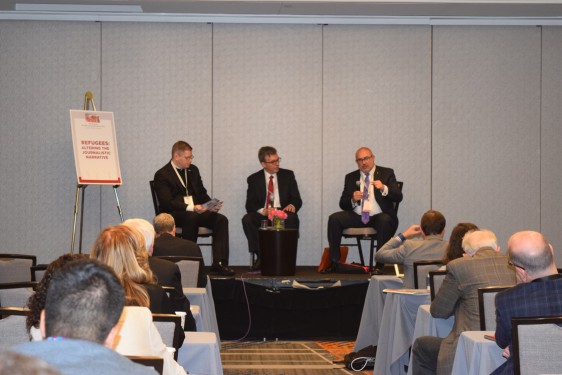
“Refugees: Altering the Journalistic Narrative” was moderated by Father Patrick Keating, CEO of Catholic Migration Services, who said people are often confused about who a refugee is and it is the media’s job to clear that up.
According to the UN, a refugee must have “a well-founded fear of being persecuted for reasons of race, religion, nationality, membership of a particular social group or political opinion.”
Panelist Edward Clancy, director of outreach and evangelization for Aid to the Church in Need, said a proper background is crucial to help people truly understand the refugee crisis. He also said it is important to look at the personhood of the refuges, not just their victim status.
Ideologies dehumanize people said panelist Michael La Civita, communications director at Catholic Near East Welfare Association. One way to combat that, he said, is to look at individuals’ lives before they became refugees, to see how intricately part of society they were and how much poorer their homeland is for having lost its diversity.
“We can’t let the speed of the world let us forget that there are people that need their voices heard, that need our help,” Clancy said.
He gave the example of the two-year-old #BringBackOurGirls campaign in Nigeria, which served as a good outcry while it lasted, but has been mostly forgotten by politicians, celebrities and most of the world. However, he said many Church institutions are still there caring for the families and hoping to see the girls back home safe, despite the disappearing publicity.
Perspective of Statistics
In a plenary workshop, Leah Libresco, a news writer for FiveThirtyEight, came armed with a keen knowledge of statistics. She urged attendees to always question the statement “Catholics think…” She said that if a researcher was determined enough, nearly half the country could be classified as Catholic. Therefore, results would always be skewed.
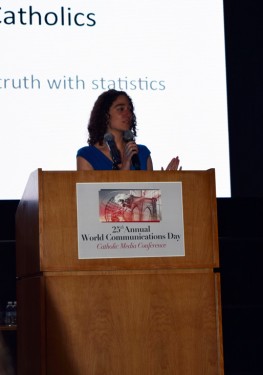
Even if one were to look at church attendance, a good indicator of how practicing a Catholic is, then a lot of times the question becomes the problem. Catholics tend to have varying degrees of definitions for words such as “sin,” “punishment,” and “change.”
Therefore, she said, journalists must look to see if there is a baseline question with the statistic that measures the audience outside of controversial topics.
Poll readers must also consider what answer options are missing from the poll. Libresco finished her talk by challenging the media content creators in the room.
“Numbers are a good start to a conversation and you have to color that in with people,” she said.
This hit home for Francesca Norsen Tate, religion editor at The Brooklyn Daily Eagle, who said that reporters need to think critically. “You have to decide whether or not the premise for the survey is even accurate,” she said.
“We have to tell a more complicated story than a single number can do,” Libresco said. A number “can start a conversation but it is not enough to finish the conversation.”
Pablo Muñoz, a sophomore at St. John’s University, Jamaica, said that the examples of pro-life statistics used by Libresco to illustrate a point, will be helpful at his internship at a pro-life clinic in Brooklyn.
“We are beginning to blog and upload statistics helping women who are undecided to save the baby,” he said.
He added that even though he estimated that 40 percent of World Communication Day attendees were young people he hoped that more would show up next year.
Future of Catholic Media
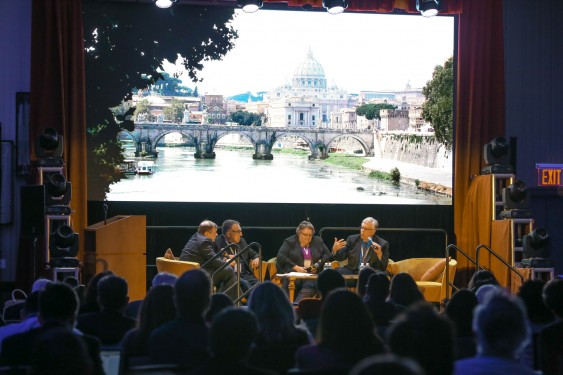
During the panel, “Evolution of Catholic Media,” Douglas Keck, COO of the Eternal Word Television Network (EWTN), said Pope Francis has changed the game of covering the Church. Now secular media is eager to print positive stories of the Church when it comes to Pope Francis.
Father Rosica, who was also a member of the panel, said religious media are good at criticizing secular media, but now secular media is looking to religious media for help in reporting on the Catholic pontiff. Therefore, it should be the responsibility of the Catholic media to reach out to all members of society.
“It’s way easier for us to stay in the Catholic household… but is that really the New Evangelization?” he asked.
But Elizabeth Scalia, editor-in-chief of the website Aleteia, maintained “There has to be a Catholic ghetto, there is no other way.” Catholics will always congregate together to share their view of God, even if it is just at Sunday Mass.
However, she said, what has come about in media, is far more dangerous: an echo chamber where left-wing- or right-wing- Catholics bounce ideas off of their own groups and not the Church Universal. She said in this way many Catholics become more and more set in their ways, regardless of what the Church is actually saying. So she views the role of the Catholic media, as bringing people out of their echo chambers and into a more productive dialogue.
Keck said that no matter what aspect of religious media he is functioning in, he always wants to make sure it is doing the best it can because he is acutely aware that these media are made possible by donations from generous people who have little to give. He added that there are many kinds of media – print, electronic, social – that tell the story of the Church.
Hunger of Millennials
Another panel addressed how to respond to millennials’ hunger for engagement and authenticity. Panelists stressed that social media and technology are tools that can attract people to God.
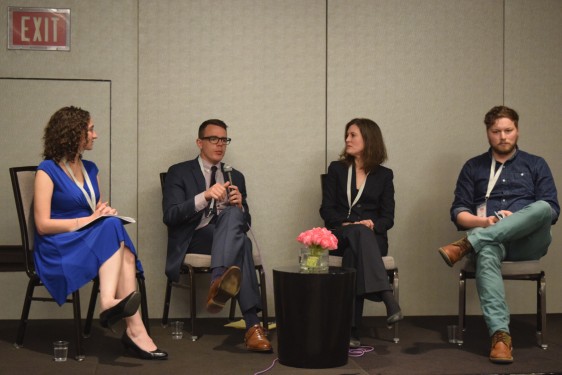
Journalist Michael O’Loughlin, said that millennials – sometimes defined as the generation born between the 1980s to around 2000 – value small moments of caring for others instead of a five-hour talk about charity. This helps to explain Pope Francis’ popularity, he added.
“You don’t have to be young to reach millennials,” said O’Loughlin, whose book, “The Tweetable Pope,” examines Pope Francis’ use of social media.
Cynthia Dermody, editor at For Her, Aleteia’s new online magazine, said that often millennials would trust the advice of a friend over an organization. Accepting this and that social media is a place where communities are formed can enable the Church to use technology as a means to engage in dialogue that builds trust.
Explaining that he sees millennials as a “shifting” generation between those growing up without the Internet, and those who did, panelist Cory Heimann said that people need to be ready to be witnesses online (and offline).
“If we want people to be attracted to the faith, we start with beauty and we let that to lead to truth and goodness,” he said.
After the panel, moderator Libresco said that being literate in digital media would help people not to stumble in communicating the faith to a younger generation. But, she added, nothing is a substitute for joy.
“Learning to use social media is necessary to have easier ways to communicate that but ultimately it’s the message that shines forth,” she said.
Pope and Pop Culture
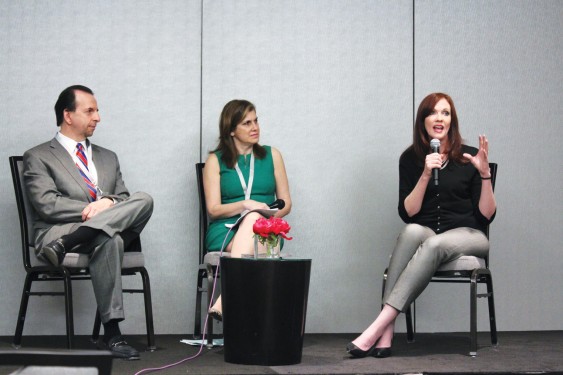
Giving “curb appeal to Catholicism” is how radio personality John Harper described Pope Francis’ impact on today’s world in the breakout session: “Pope and Pop Culture: Radio in the Year of Mercy.”
Harper and fellow radio personality Jennifer Fulwiler discussed the Holy Father’s ability to generate tremendous media interest and the role of Catholic media in offering authentic evangelization, particularly over the airwaves.
Lisa Jandovitz, producer of The Catholic Channel’s “Personally Speaking” on SiriusXM Radio moderated the session.
Host of Relevant Radio’s “Morning Air,” Harper said his listeners view Pope Francis as a “regular guy,” who brings the Good News into everyday life, especially when he speaks off the cuff and from the heart.
“That willingness to be informal and maybe even a little messy, is what is getting people’s attention,” said Fulwiler, host of The Catholic Channel’s “The Jennifer Fulwiler Show.” An active social media presence further “humanizes” the 79-year-old in the world’s eyes.
Panelists agreed that the charismatic pontiff is opening doors to evangelize those who tune in to Catholic and secular media to see what he is doing and saying. Late last year, Jandovitz noted that he even asked journalists to start shedding more light on good news in the world.
The lack of depth and meaning in news stories “pushed out” by secular media is reflective of the “increasingly secularized, increasingly atheistic” culture, Fulwiler said.
A Catholic convert, she finds more and more people are yearning for meaning. Faith-focused media fills that void by providing news with truth, hope, authenticity and “a greater understanding of the human person.”
“Including good stories is a natural part of authentic Catholic communication,” Fulwiler added. She noted that Catholic media effectively “tackles really difficult issues” as well.
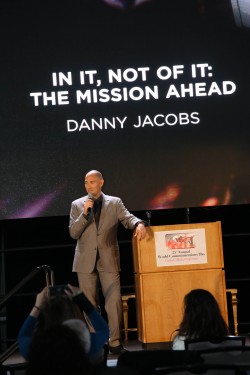
Communication and Mercy
Lebanese Catholic voice actor Danny Jacobs closed the daylong conference with his presentation, “In It, Not of It: The Mission Ahead.” The voice of “King Julien” for DreamWorks’ Nickelodeon Madagascar franchise, Jacobs is a former seminarian for the Archdiocese of Los Angeles, Calif.
As Catholics living “in the mess of the world,” but not of the world, he spoke about “excellent self-love” as the foundation for approaching others with love and mercy.
“All love is a form of self-love, and all loathing is a form of self-loathing,” he noted.
If people understood themselves as “sacred,” “infinitely valued” and “beloved children of God,” and saw others “in the same light,” he explained, then no one would hurt anyone else because they would recognize each other as “the family of God.”
Reflecting on the theme of communication and mercy, he asked the Catholic media professionals to “remember that your self and your identity is in Christ.”
Reactions of Participants
Father Matthew Schneider, came to the Brooklyn event from Washington D.C. He is involved in the communications for the Legionaries of Christ and was looking forward to hearing the speakers.
“The main goal of the communication of the Church needs to be the positive message of the voice of Jesus,” he said. “And not to get bogged down in the negatives.”
Neida C. Martinez, from Our Lady of Mount Carmel Church, Astoria, said she learned many interesting things at the “Millennials” panel.
“We have to do things authentically. Especially when it comes to millennials, we need to have them understand that what we are doing through our Church is real and not fake. We are doing it for each other and eventually what we do for each other we do in the name of Jesus,” she said. “Bottom line, if we don’t share the joy of Christ, what is there?”
For Marie Guileme Elie, a parishioner of Holy Innocents Church, Flatbush, who has been coming to the event for three years, this communications day was the best one yet.
“When we have big gatherings like this, we see how many other people are involved from different media,” she said. “I can go back to my parish and relate this, especially to the younger generation to encourage them.”
For Mary McCarthy Hines, assistant director for media relations at Catholic University of America, Washington, D.C., this annual media event offers an opportunity to gain “great information” about current issues in Catholic media, and network with the people she knows and would like to know.
“When you’re looking for a Catholic expert, you’re going to go to a Catholic university. We’re hoping that we can help out the secular media a little bit more,” she said.
“We have scores of experts that can help them.”
She was passing out business cards and information about the university to event speakers and attendees she met throughout the day.
“I liked the message that was presented last year and I wanted to come back again,” said Janet Johnson, a parishioner from Our Lady of Mercy, Brownsville. “I’m here to learn so I can get more involved in my faith.”
This was the second year Sister Mary Ann Ambrose, C.S.J., attended the event. She appreciates the information and resources provided, and also gains more confidence in her social media efforts.
“After the last World Communications Day, I felt the courage to tweet. Now I’m going to try Instagram,” she said. She’s also looking forward to “enhancing the parish website” for Immaculate Heart of Mary, Windsor Terrace, where she serves as pastoral associate.
Contributing to this story were Marie Elena Giossi, Maria Pia Negro Chin, Ed Wilkinson and Antonina Zielinska.

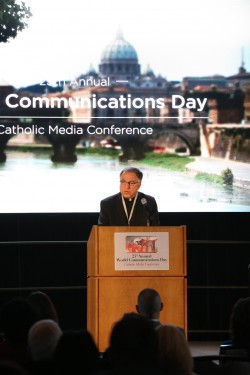
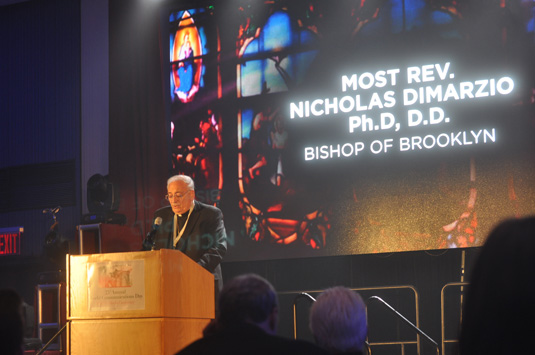
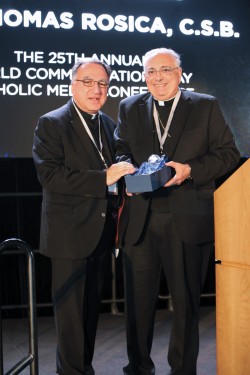

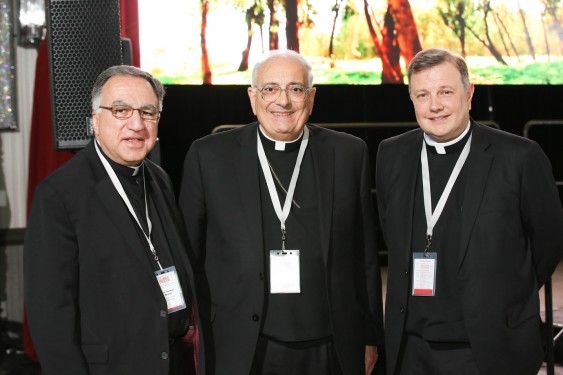
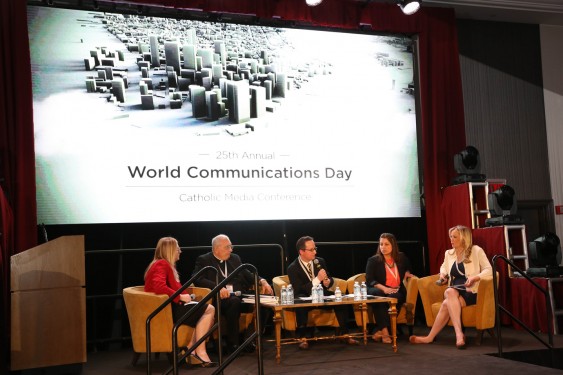

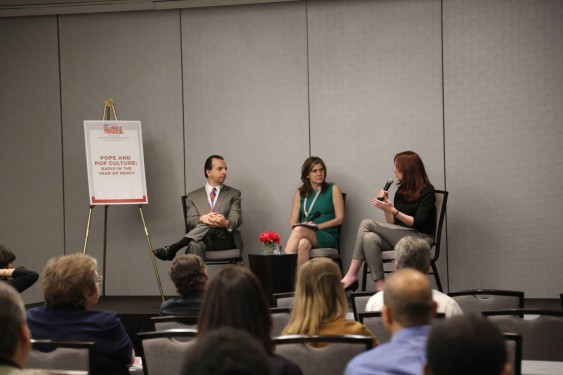
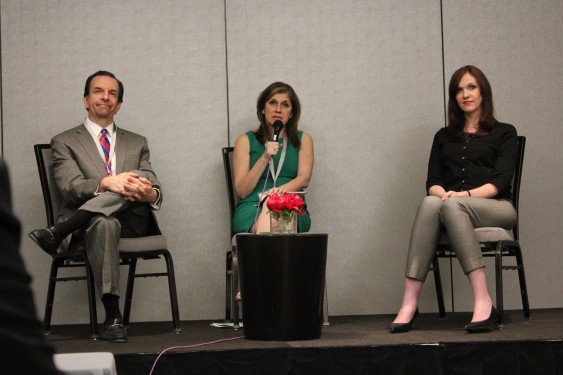
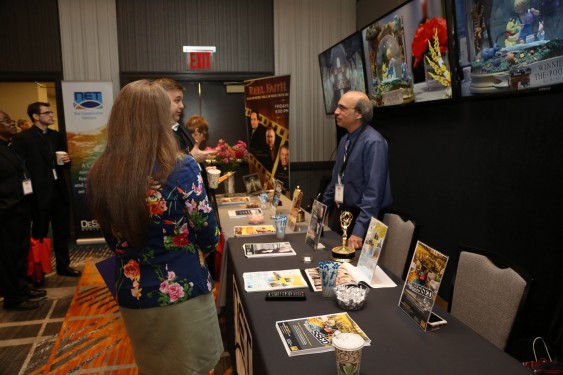
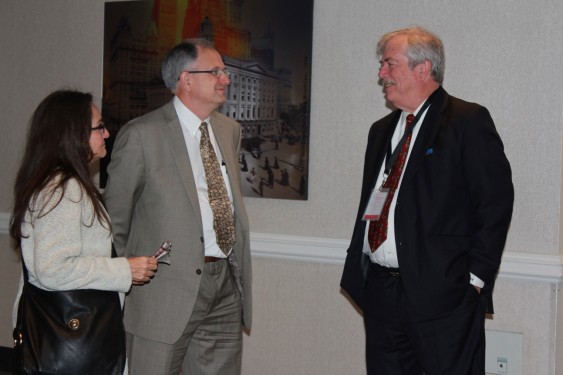
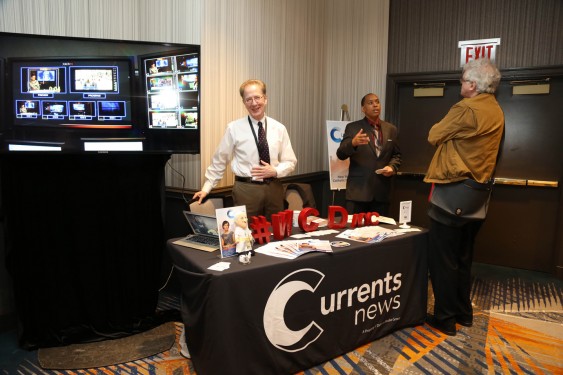
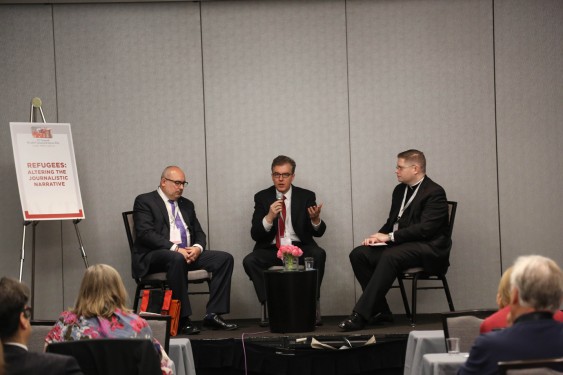
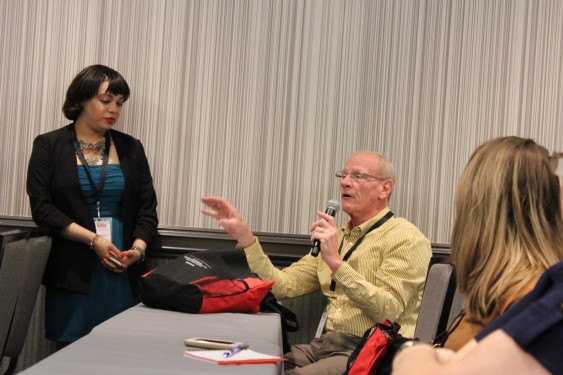
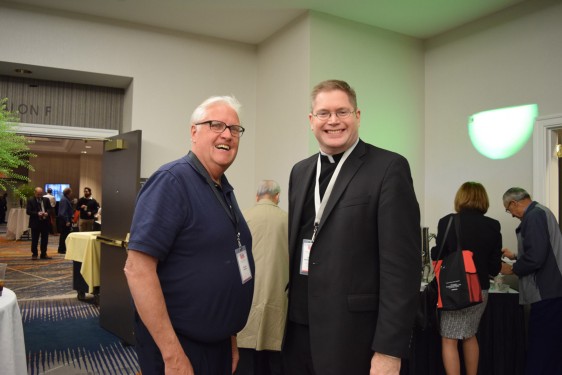
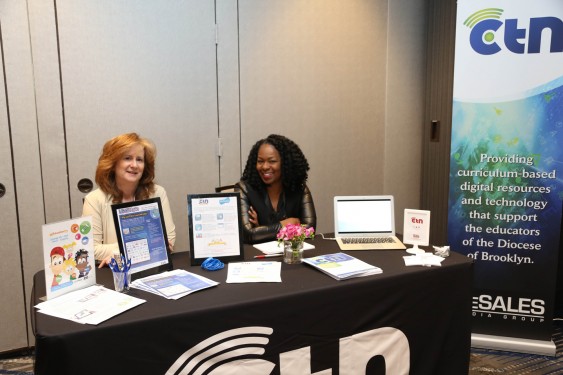
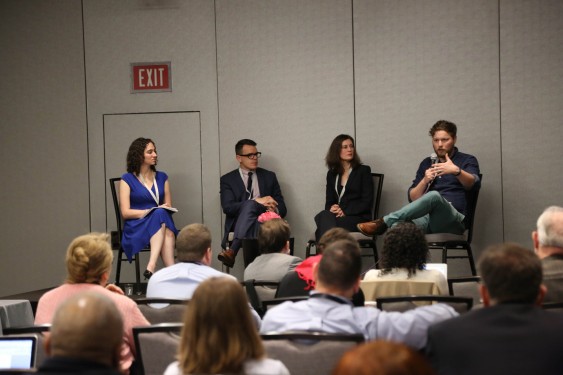
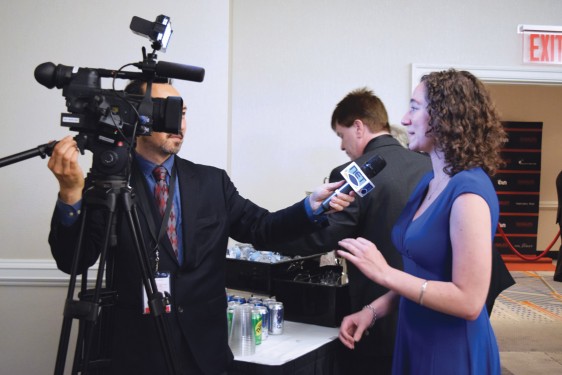

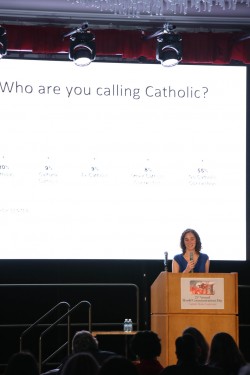
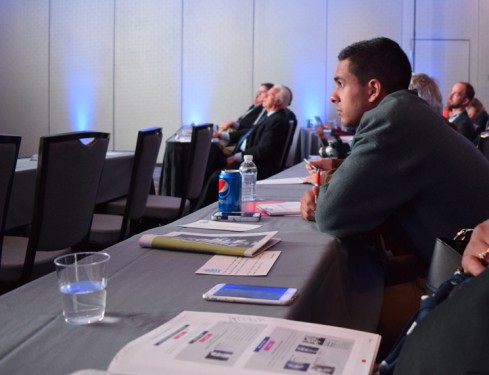
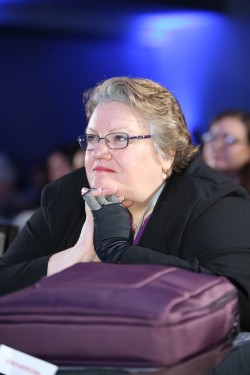
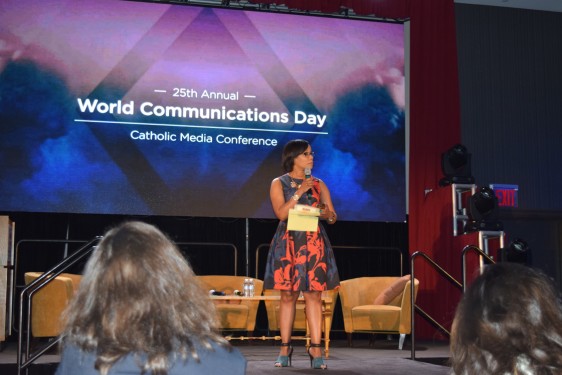
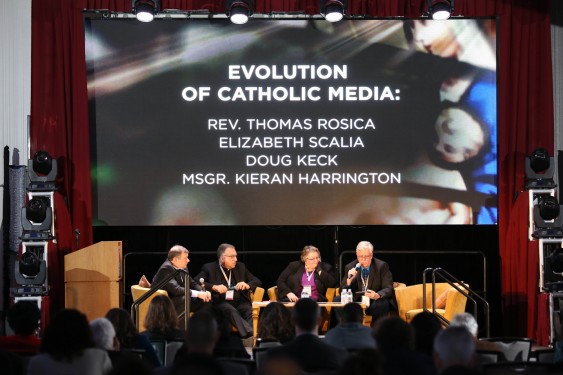

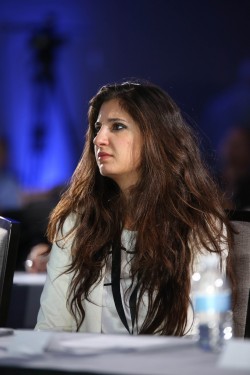
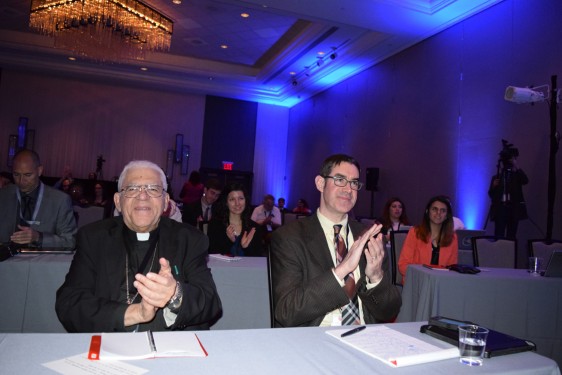
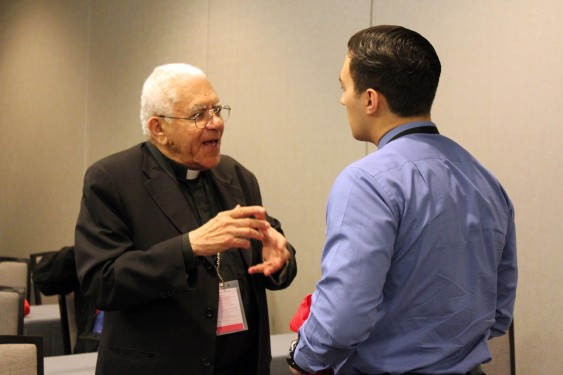
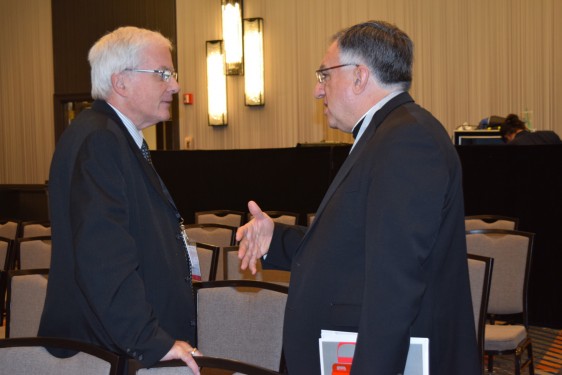
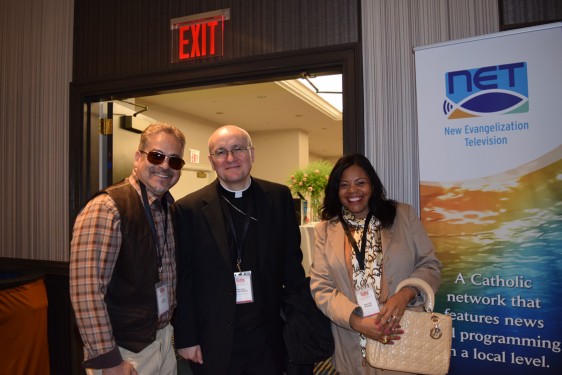
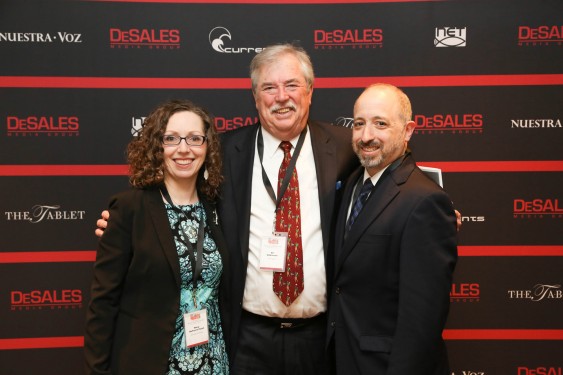
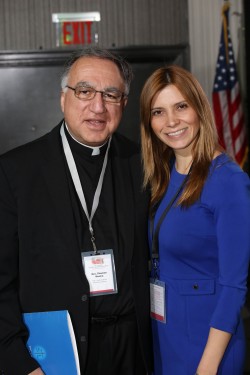
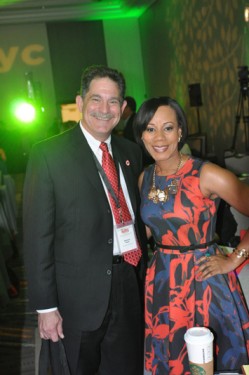
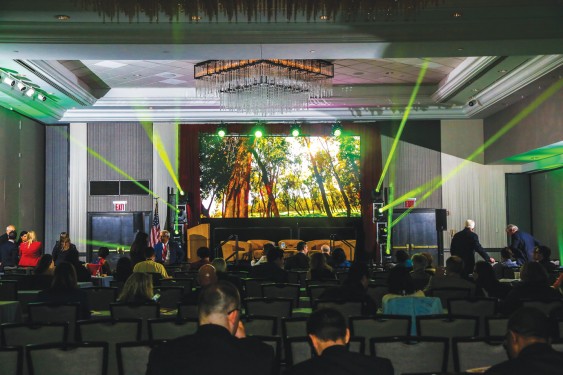
I would like to subscribe to Aleteia News